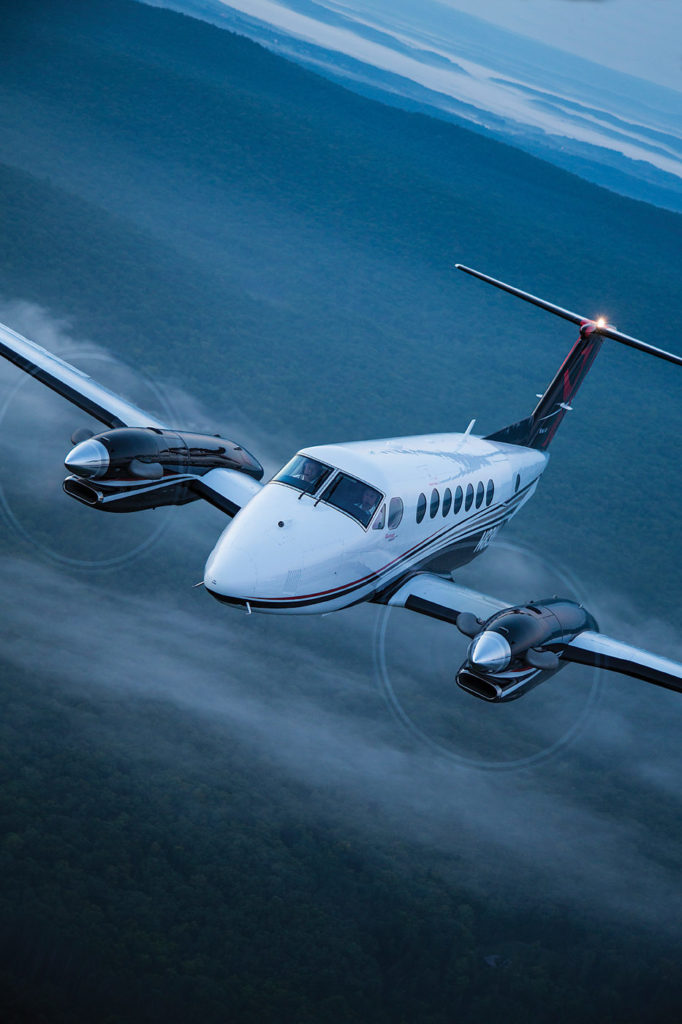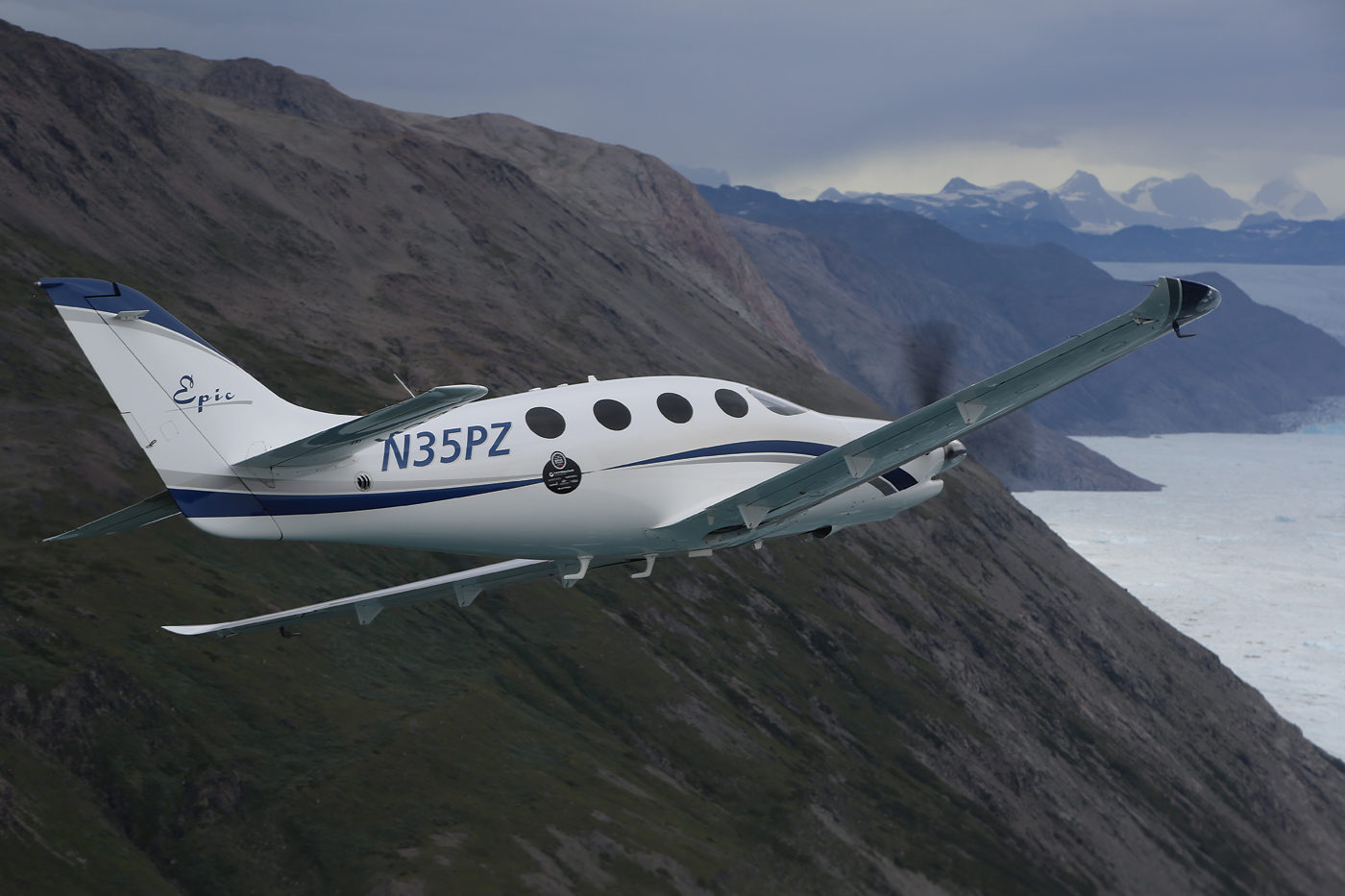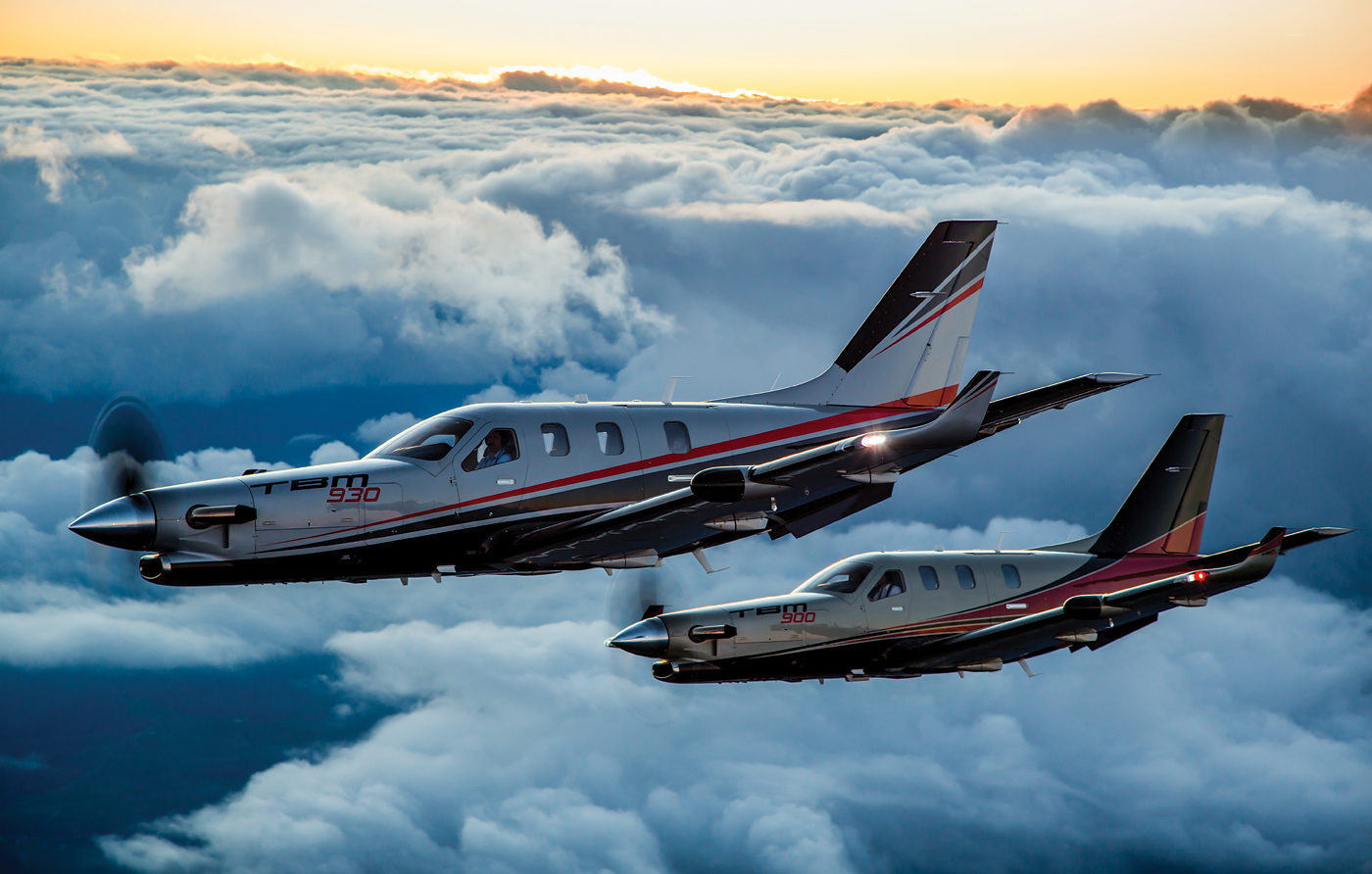Estimated reading time 13 minutes, 56 seconds.
After years of predicting the demise of turboprop aircraft production, ostensibly because propellers were so, so passé and jets were so very cool, the predictors have been proven wrong.

According to 2016 annual figures from the General Aviation Manufacturers Association (GAMA), turboprop deliveries rose by 3.4 per cent while jet production was actually down by 7.9 per cent last year. A total of 576 new turboprops was delivered in 2016, representing an increase from 557 deliveries in 2015. There are a lot of reasons for this resurgence, but most of them relate to simple economics. It’s cheaper to own and fly a turbine airplane equipped with propellers, and the operating requirements are simpler.
Looking abroad, we can anticipate growth in the use of single-engine turboprops in European countries. The European Aviation Safety Agency (EASA) has joined the rest of the world in allowing commercial operation of single-engine turbine aircraft. This move is not expected to take business away from jet charter companies, but rather to open up new markets that had previously found jets too expensive.
The turboprop market can be divided into three categories: twin-engine; single-engine pressurized; and single-engine utility.
Turboprop twins have, for decades, been defined as “King Airs and others.” Beechcraft (now Textron Aviation) has dominated the business by building good, solid airplanes that appeal to pilots and passengers alike. Piaggio’s Avanti, on the other hand, does not really compete directly–rather, it offers extra performance the King Air can’t match, such as 400-knot speed, a 41,000-foot operating ceiling and a jet-like ride ahead of pusher propellers. As evidenced by the Bombardier Q400’s successful challenge to regional jets, a fast turboprop can certainly compete.
It’s the single-engine business turboprop class that has the most choice, ranging from Piper’s M500 and M600 personal-size turboprops to Pilatus’ big PC-12NG. Textron is developing its Denali as a direct challenge to the PC-12, and the perennially about-to-certify Epic E1000 and One Aviation’s Kestrel 350 are also under development, with sleek all-composite airframes. For now, each of the major players–Piper M-Class, Daher TBM 900/930, and Pilatus PC-12NG–fills a distinct niche for executive-type turboprops.

The single-engine utility turboprops are Textron’s Caravan and Quest’s Kodiak, both designed to be adaptable to a variety of roles, from plush seating to floatplane and ski-plane operation. Pressurization and retractable landing gear is not a priority when lofting skydivers or bringing supplies to remote villages. Closely matched, both airplanes in this division are rugged, reliable and simple to operate.
Here, Skies examines these aircraft in more detail:
Beechcraft King Air
The four King Air models from Textron Aviation range from the King Air C90GTx to the King Air 250, King Air 350i and King Air 350ER. Sharing similar airframes, the King Air 350i and 350ER target different markets.
The 350i is a corporate workhorse, seating a maximum of 11 passengers with a 15,000-pound takeoff weight, operating at speeds up to 312 knots with Pratt & Whitney Canada PT6A-60A engines of 1,050-shp, delivering a 1,806 nautical mile (nm) range.
The King Air 350ER, for extended range, is powered by a pair of PT6A-60A engines and supports surveillance missions with a 2,692 nm range at a maximum takeoff weight of 16,500 pounds.
The three-foot shorter King Air 250 has two less cabin windows on each side, seating a maximum of 10 passengers and flying at speeds up to 310 knots with its 850-shp PT6A-52 engines. The King Air 250 has a standard takeoff weight of 12,500 pounds.
The entry-level King Air C90GTx builds on 53 years of production, offering seating for up to eight passengers, powered by PT6A-135A 550-shp engines and delivering speeds of up to 272 knots. In the past year, all King Air models have been re-certificated with the Collins Pro Line Fusion electronic flight deck.
“Our product roadmap is focused on satisfying our operators’ requirements, and making Pro Line Fusion standard on our production King Airs is in direct response to customer feedback,” said Christi Tannahill, senior vice-president, Turboprop Aircraft and Interior Design. “Offering the latest technology in the cockpit and cabin has resulted in great market reaction; our owners and operators clearly appreciate that these new features improve the overall flight experience and value of the King Air.”
Older King Airs can be upgraded with Garmin’s G1000 Nxi suite. “We are excited to bring yet another modernized solution to our King Air customer base,” said Brad Thress, senior vice-president, customer service. “Garmin’s G1000 NXi platform presents a valuable avionics solution for our King Air owners and operators who want an integrated flight deck that combines the latest in cockpit technology with an upgraded visual interface.”
Piaggio Aerospace Avanti EVO
The Piaggio Avanti EVO emulates jet-like performance with turboprop advantages. Its pusher-type engine configuration, combined with a three-lifting-surface design, allows it to have a 69-inch cabin height and 73-inch cabin width, placing engine and propeller noise aft of the cabin. The Avanti can fly as high as 41,000 feet with a 6,600-foot cabin altitude and cruise at up to 402 knots. An increased-range option allows trips as long as 1,720 nm.

The EVO package of improvements, announced in 2014, included winglets, five-blade scimitar-shape propellers, redesigned exhaust stacks, digital power steering for the nosegear, anti-skid braking and interior refinements. New Hartzell propellers, turning at 1,800 rpm instead of the previous 2,000 rpm, helped reduce external noise by five A-weighted decibels [dB(A)], or about 68 per cent, and the interior noise was reduced by one dB(A), roughly 20 per cent.
Piaggio Aerospace is wholly owned by the Abu-Dhabi-based Mubadala Development Company, although production and headquarters remain in Savona, Italy.
Pilatus PC-12NG
For now, the Pilatus PC-12 represents the largest and most capable single-engine turboprop, seating up to nine passengers in an expansive cabin. Because of the aircraft’s big power-actuated aft cargo door and forward airstair entrance, the PC-12 is frequently used for a combination of passengers and freight.
With its PT6A-67P engine rated at 1,200 shp, allowing flat rating for high temperatures, the PC-12NG can cruise as fast as 285 knots. Thanks to the large wing and effective flaps, it can take off over a 50-foot barrier in 2,600 feet and range as far as 1,845 nautical miles. Some 90 PC-12NGs were expected to be delivered in 2016.

Ignaz Gretener, vice-president of Pilatus Aircraft Ltd.’s General Aviation business unit, commented on the PC-12’s high ranking in both sales and service in 2016: “The entire Pilatus team, from engineering to manufacturing to sales and service, worked hard this year to achieve these successes in a very challenging market. We continue to believe that the simple formula of a great aircraft combined with outstanding service is how we create value for our customers. We are grateful to our customers for continuing to partner with us in this journey.”
Daher TBM 900 and 930
First to the single-engine turboprop market in 1990, Daher’s TBM family offers speed and utility approaching many light jets. The TBM 900 series can cruise at up to 330 knots and is certificated to fly as high as 31,000 feet. Using the PT6A-66D engine delivering 850 shp, the TBM’s large cargo door, incorporating entrance stairs, adds versatility, with an optional forward crew door for maximum use of the cabin. With the introduction of the TBM 930, Garmin’s G3000 avionics suite was offered; the previous TBM 900, with G1000 avionics, is being upgraded with the new G1000 NXi.
“Last year…54 airplanes were produced and delivered, two more than initially scheduled,” said Daher senior vice-president Nicolas Chabbert. “We saw our sales doubled in Europe. With the 2016 TBM 900, the TBM 930 introduced the TBM e-copilot system.”
Piper M-Class Turboprops
Using the 600-shp version of the PT6A-42A engine, Piper’s M600 (certified by Transport Canada in January 2017) incorporates a Garmin G3000 flight deck, with safety features like automatic level mode, electronic stability protection and underspeed protection.

The M600’s 6,000-pound maximum takeoff weight contributes to 2,400 pounds of useful load, about 700 pounds more than the still-available M500, and its larger fuel tanks can allow a maximum range of 1,484 nautical miles. The six-place cabin is compact, contributing to the airplane’s 274-knot maximum cruise speed.
Textron Aviation’s Cessna Denali
A new single-engine turboprop announced by Textron Aviation in 2015, the Denali will serve an entirely different market from the OEM’s Caravan. It will be a high-flying pressurized retractable, powered by a 1,240-shp GE turbine with a 4,000 hour time between overhaul (TBO), rather than the ubiquitous Pratt & Whitney. The avionics suite will be the Garmin G3000 system.

The Denali is expected to cruise at 285 knots, offer a four-passenger range of 1,600 nm and have an 1,100-pound full-fuel payload, incorporating a spacious cabin suited for executive use.
Cessna Grand Caravan EX
In production since 1985, Textron’s latest Caravan variant, the Grand Caravan EX, uses the PT6A-140 engine with 867 shp. The short-cabin Caravan 675 remains in the line, but the bulk of sales are for the Grand Caravan EX. The flight decks feature a Garmin G1000.

No slouch in the performance department, the Grand Caravan EX can cruise at up to 195 knots and range out to 964 nm. Seating up to 14, depending on the rules in the operator’s country, the aircraft’s useful load can be as high as 3,692 pounds. An optional belly pod adds even more storage space.
Quest Kodiak
Certificated in 2007, Quest Aircraft’s Kodiak is slightly smaller than the Cessna Grand Caravan EX, seating up to 10 passengers in a utility role. Similarly fitted with a strut-braced high wing and rugged fixed tricycle landing gear, the Kodiak uses a 750-shp PT6A-34 powerplant, with a maximum useful load of just over 3,500 pounds. Cruise speed is as high as 183 knots, and the cabin volume is 248 cubic feet; a belly pod is also optional. With eight feet less wingspan than the Caravan, the Kodiak manages tighter quarters more easily.
Recently celebrating its 200th delivery, Quest reported 36 Kodiaks were delivered in 2016.

“2016 was Quest’s strongest year to-date,” said new CEO Rob Wells. “The company saw increased production levels and deliveries, as the demand for a versatile aircraft like the Kodiak grows. In addition, the increasing demand for Kodiaks required a 25 per cent expansion of the production facility, a project that was completed in September. This essential investment will allow us to efficiently support production growth in the coming years.”
Epic E1000
As a planned certificated outgrowth of previous kit airplanes, the Epic E1000 has roots dating back to 2004. Located in Bend, Ore., Epic previously pursued an ambitious single-engine jet and other programs. Following a brief Chinese ownership, the company is presently owned by Russian company Engineering LLC.

Seating six, the E1000 is powered by a Pratt and Whitney Canada PT6A-67A engine, flat-rated at 1,200 shp. Quoted cruise speed is 325 knots, certification is planned to 34,000 feet and range will be as much as 1,650 nm. Because the airframe is built of carbon fibre, the full-fuel payload is quoted to be 1,120 pounds. A three-screen Garmin G1000 avionics deck is planned. The certification effort began in April of 2013 and has resulted in steadily-advancing target dates for completion.
One thing is certain: With the plethora of choices in the turboprop aircraft market, there is a solution to just about every need. This is one segment of general aviation that seems to be holding strong, despite, or perhaps because of, struggling economics.
LeRoy Cook has been writing about aviation subjects since 1970 and is a 50-year flight instructor with 16,000 hours logged. He calls himself “a student of aviation” and continues learning with each flight.

